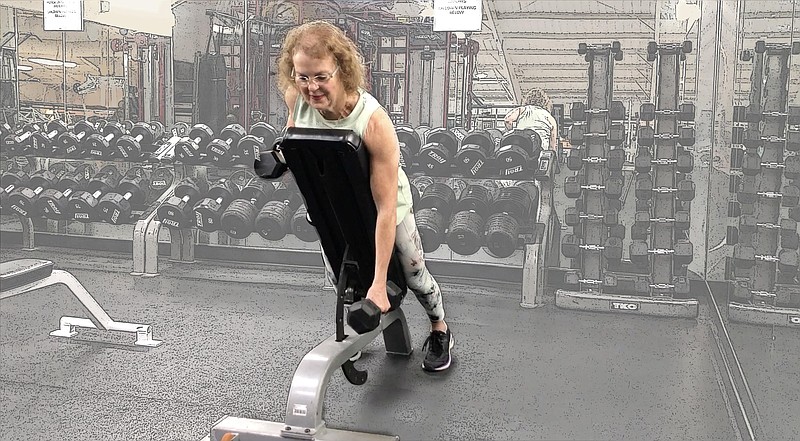Training the upper back can cause anxiety for those who have experienced neck discomfort. Cervical pain can be extremely debilitating, and any kind of stress or tension has the potential to aggravate a condition after it subsides.
This week, I'll share some tips for those who are interested in training the upper back but have cause for concern. Plus, I will introduce a cool upper back exercise designed to challenge the rear deltoids and upper trapezius muscle groups.
For most of my life, I have had a recurring neck strain that seemingly appears out of nowhere. Sometimes it rears its ugly head after a full day of jarring activity, and other times I wake up with it. There's no rhyme or reason that I've noticed, and that makes training my upper back a little unnerving.
This condition has helped me learn how to manage my fitness routine in a way that does not aggravate my neck pain. In fact, my neck usually feels a lot better after I finish training. So, I thought I'd share some tips that seem to help me work around this unusual condition -- in hopes that I might also help another.
My first rule is not to train if I have acute pain. This is the sharp, stabbing pain that feels like something is wrong. When my condition is really bad, the pain is so intense that exercising the area is out of the question anyway. But it's a good rule to mention, as some discomfort is a normal part of strength training. But sharp pain is more concerning and could suggest a serious problem that needs to be checked by an orthopedic physician.
When training, I am careful not to load the neck muscles with "shrugged" shoulders. Lifting the shoulder blades, as we do when we shrug our shoulders, adds unwanted tension in the upper cervical section of the spine. If there already is damage in that area, adding tension is not a good idea.
So, I am particularly aware of the position of my shoulder blades and actively press them down during any upper back activity. Seated rows, incline rows and one-arm rows are just a few examples of exercises that require strict adherence to form in terms of the shoulder-blade position.
This week's exercise is a good opportunity to put the "shoulder blade pressdown" into practice. The Incline Alternating Iso Row is a fun way to mix up training with an isometric contraction on one side while the other side performs normal repetitions.
[Video not showing up above? Click here to watch » arkansasonline.com/1122master/]
1. Select a pair of dumbbells and position yourself face down on an exercise bench that is inclined to 45 degrees. You will actually be standing, and simply leaning your chest against the bench.
2. From here, lift both dumbbells toward your underarm.
3. Once the dumbbells almost touch the bench, hold the right one in place with an isometric contraction.
4. While you hold the right one, perform five quick repetitions with the left arm.
5. Hold the left arm in a flexed position while you perform five quick repetitions with the right arm.
6. Finally, perform five with both arms.
Of course, neck pain should be checked by a physician before any type of strength training. This week's article is more about managing a fitness routine around chronic neck pain, and hopefully I have shared some useful tips. They have worked for me. Enjoy!
Matt Parrott has a doctorate in education (sport studies) and a master's in kinesiology and is certified by the American College of Sports Medicine.
vballtop@aol.com
